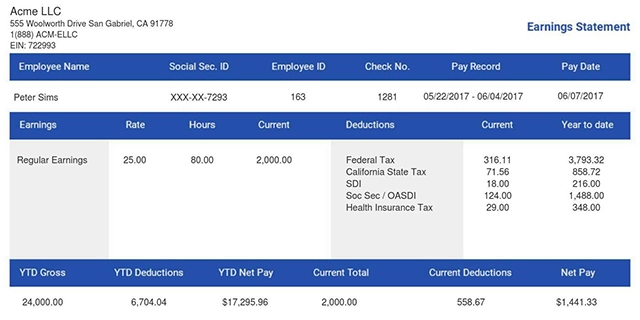What is a Bridge Loan? - The Full Guide
A bridge loan is a helpful, short-term loan. Individuals or companies can use a bridge loan to secure an investment. They are used to supplement finances while permanent financing gets finalized. Homeowners commonly use bridge loans to pay a down payment while selling their previous homes. Companies also make use of bridge loans to cover expenses related to business.
A bridge loan can be an effective method of quick financing if used responsibly. They are associated with higher risks, so the interest rate is higher. They are particularly effective in covering the down payment for homes in real estate. They differ from home equity and personal loan.
Bridging financing has a history in the 1960s but exploded after the 2008 financial crisis. This was the reaction of banks being more hesitant to give out loans for homes.
Bridge loans are a popular short-term financial solution, but they should be dealt with responsibly.
Also read: Can I Pay Off My Mortgage Early?
What is a Bridge Loan and How do they Work?
A bridge loan, also known as a bridging or swing loan, is temporary financing for individuals while they wait for permanent financing. It essentially bridges the gap between payments. Bridge loans are immediate relative to other types of loans. Customization is possible for the borrower.
Bridge loans differ from traditional loans, especially in terms of length. The average bridge loan is 6 months. However, they can be as short as 90 days and as long as 12 months. Money is secured faster through expedited application processing. Long-term financing is the end goal for those taking out swing loans.
The nature of the bridge loan ties it to significant risk for the lender. This risk results in higher interest rates and fees.
Also read: How Do Banks Verify Income For Auto Loan?
Where to get a Bridge Loan
Banks are the best place to acquire these loans. Banks have the most robust and restrictive lending policies but have the lowest interest rates. A secure financial situation with a sales agreement will increase the chances of approval at the bank. A homeowner will likely get approved by a bank that already acts as their mortgage provider.
Other lending services can give out bridge loans. Private and “b” lenders are more willing to lend the finances to riskier situations. However, the interest rates are significant.
Down Payment
In real estate, a bridge loan is covered as a down payment between homes. The need for the loan is higher in seller’s markets. The loan can supplement the finances so a homeowner can take advantage of a competitive market. The homeowner does not have to take a lower offer to close faster. The bridge loan is paid back with the closing cost of their sold home. The home is the collateral.
The bridge loan allows a person to carry on two mortgages. The loan allows the borrower to take on the mortgages from both of their homes for a fixed term. This does mean two mortgage payments, so it is in the interest of the borrower to settle everything quickly.
Structure
Typically, the loan gets capped at 80% of the combined value of both homes. This is called the Loan-to-Value ratio (LTV). The LTV for residential properties does not exceed 65%. For residential homes, if the old home sells for $800,000 and the new house is $900,000, the calculation would be (800,000+900,000) x.8. So, in this case, the maximum bridge loan would be $1,360,000.
Some institutions will calculate the bridge loan as the value minus the mortgage. So, a person selling a home worth $600,000 with a $300,000 mortgage would get a maximum $300,000 bridge loan.
Additional fees and points will affect the calculation. These will vary on a case-to-case basis.
The loan may be defined as open or closed. A closed loan will have a predetermined time frame. The open loan does not have a payoff date.
Also read: 11 Best Personal Finance Books
Home Equity Loan
It differs from a home equity loan. A bridge loan can be taken out during the sales process. Home equity loans need to be arranged before the house gets put on the market. Home equity loans have lower interest rates and fees than bridge loans while taking longer to pay back. Both a home equity loan and a bridge loan can be a second mortgage.
The home equity line of credit is a similar idea. It differs in that loans are one-time lump sums and the line of credit is funds that are accessed according to needs.

Qualifying
Qualifying for bridge loans is comparable to qualifying for a traditional mortgage or a personal loan. The financial institution looks for good credit, proof of income, and sometimes the sales agreement. Paperwork is minimal to get a bridge loan.
A firm sale agreement on the previous house makes the approval process easier for the borrower. Without it, the risk may be considered too high for the bank. Private lenders can secure a bridge loan. Private and "b" lenders give the highest interest rates.
Businesses
Corporate finance and business also use bridge loans. Businesses can take out a bridge loan to cover day-to-day expenses while searching for large investments. Money from the loan can carry struggling companies for the time being. Similar to a homeowner, the bridge loan works as a financial bridge for a business.
Businesses also use the cash flow to buy properties and land. Established companies do not experience much pushback from banks as they can use equity in the company as collateral.
Avoid Private Mortgage Insurance
Private mortgage insurance is something that needs to be paid with conventional mortgages. The lender gets covered by issuing this insurance as it protects them if the borrower stops paying their mortgage.
Bridge loans do not require this. These loans come with fees, but do not require the costly monthly or lump sum payments that mortgage insurance charges.
Bridge Loan Examples
A bridge loan is likely used anytime a new house closes before the old house. It is not common for a person has enough cash to secure the down payment on the house without the equity from their old home.
Also read: How Do You Calculate Net Pay?
Homeowners
If a person bought a house that closes on Sept 1, but the house they just sold has a closing date on Oct 1, they should take out a bridge loan if they do not have massive savings to cover the down payment. The bridge loan will cover the cost as they use the sales agreement and the new house as collateral. Once their house gets sold, they can use the money gained from the sale to pay back the loan.

Businesses
A business may take out a bridge loan to cover expenses before receiving permanent financing. There are several examples where this might be the case.
If a business is in dire straits and is seeking investors, they could take out a bridge loan. The cash helps to fund business operations in the interim. In this case, the lender is taking on a significant risk.
Acquirers or investors may not rescue the business at all. Based on this risk, the interest rate would be significant. Most lenders even take an equity position.
Business and Real Estate
A company that wants to buy a building for conducting its operations can look into a bridge loan. The loan can be used to cover some of the costs. Depending on the scale of the business and the location, the price can be high. A bridge loan could never cover the entire cost of some of these transactions. Companies have the equity and cash to make these sales happen meanwhile the bridge loan covers some of the transactions.
Property Developers
Property developers use bridge loans to secure financing while logistics are being considered. Property purchasing can be a competitive environment, so developers must act quickly. A bridge loan can secure a property while arranging the permits. This is another example of a high-risk loan for the lender. The interest rate will be high, so there is still pressure to secure traditional financing to pay back the loan.
What are the benefits of a Bridge Loan?
Bridge loans are a helpful option for short-term financing. They provide that extra boost of cash flow needed in competitive real estate markets where decisions and finances need to be expeditious.
Also read: Proof of Income for a Mortgage
The Freedom to Act
Most people do not have the finances to secure an expensive down payment. They are in the market and have found their dream home, but they are stuck within their timeframe. Taking out the bridge loan lets them secure their new home.
The added flexibility and peace of mind is an invaluable benefit of bridge loans. Flexibility is valuable for homeowners, especially. Homeowners can start with moving and renovations before their previous house has officially closed. Property developers can acquire permits and plan construction while having already secured the property.
Having access to the funding removes the stress of having to sell the home at a price that is lower than expected.
Fast Financing
Traditional loans have a longer review and funding process. Since most bridge loans are for real estate where things move quickly, acting fast is the only way. There is no way conventional mortgage processes in time for people and businesses to secure properties against competitors.
Bridge loans can be approved within hours. The approval process is fastest when a homeowner has a secure sale on their home and all the qualities that make them a reliable borrower.
Financing can even be secured without an official sales agreement. This means that those that are not in a perfect position to receive a loan still have access to the possibility of funding.
Customization
The bridge loan is not robust. Banks are also not the only place where a loan is secured. Other financial institutions are willing to give out bridge financing to those who have struggled to get approval from a bank.
A bridge loan can work in a way that fits the borrower’s needs. Financial institutions can offer first and second mortgage bridge loans. They can incorporate the interest into the loan to keep interest payments manageable during the loan term.
The length of the loan can be configured. No one wants to have to owe large amounts of money for long. If the closing dates are only a month apart, the loan can be adjusted accordingly with a short-term bridge loan. It can be arranged if a business needs a year of cash flow.
What are the Cons of Bridge Loans?
The bridge loan helps people and businesses out of tough financial situations. Understanding the whole picture of bridge financing is necessary. Otherwise, they can do more harm than good.
High-Interest Rate
Lenders offer bridge loans and take on a fair amount of risk. The risk varies on a case-to-case basis. The higher the risk, the higher the interest. Real estate is a fickle market, so it is hard to consider anything a done deal.
Despite being short-term financial assistance, the interest rates can add up. The lender does not have much time to make money on the loan, so that contributes to the inflated rates. If the lender pays back expeditiously, the interest rate is offset.
Interest can be as high as 10%.
Fees and Collateral
Fees get included in the loan to make the risk valid for the lender. The fees can be a few thousand dollars just to start. Originate fees can be included, which are around 3% of the loan amount. Other fees can be included in the loan agreement to sweeten the deal for the lender.
The borrower must be careful with using the house as a form of collateral. Putting the house up as collateral is a major risk. If not careful, the house could become the victim of foreclosure.

Risk
Both parties are taking a risk in moving forward with a bridge loan. The lender is the most protected against these risks. The borrower has fewer federal protections compared to taking out a traditional loan.
Depending on the case, the borrower is risking their home. If a sales agreement falls through, a person trying to sell one home and buy another would be on the hook for two mortgage payments. Falling behind on payments leads to being responsible for the current mortgage payment, the mortgage on the new home, and paying back the loan.
A developer must pay back the loan even if their property development does not materialize. Businesses that take out a bridge loan to tide them over have no guarantee of acquiring investors.
Conclusion
The bridge loan needs to be used with caution. There are significant risks in taking out a loan associated with immense risk and high interest. The borrower must understand these risks before they get a bridge loan.
Bridge loans typically give the necessary short-term financial boost that allows people and businesses to make quick transactions. People can jump on a home they love in the competitive seller’s market. Businesses can stay afloat while the company secures permanent financing.
There are many benefits of the bridge loan. It is up to the borrower to assess risks, select the right loan, and be diligent about mortgage payments to make the bridge loan work.
Our check stub generator is also a great way to make check stubs online and it is simple to use.
















